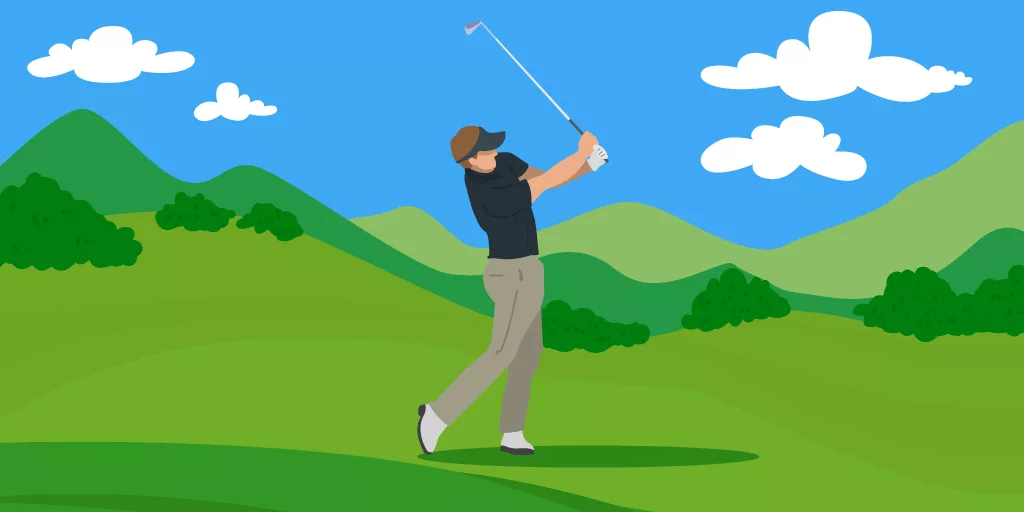
Mastering fairway wood ball-striking is essential for enhancing your golf game. In this article, we'll explore key tips and techniques to help you consistently strike the ball with your fairway woods.
Key Takeaways
- Optimize setup, swing, and alignment for consistent striking
- Master shot shaping and adapting to various course conditions
- Enhance mental focus and dedication to regular practice
Fairway Wood Fundamentals
Understanding Fairway Woods
Fairway woods, which are characterized by a larger, more rounded clubhead and a longer shaft, provide distance and versatility from various lies on the course. They're commonly used for long approach shots, off the tee on tight holes, and for escaping challenging lies in the rough or around obstacles.
Perfecting Your Setup and Address
The Right Stance and Alignment
Use a slightly wider stance with your feet shoulder-width apart and parallel to your target line when swinging fairway woods.
Optimizing Ball Position
Place the ball slightly forward in your stance, around the inside of your front heel, promoting a sweeping motion at impact.
Grip and Posture Essentials
Hold the club with a neutral grip, hands positioned slightly down the shaft, and maintain an athletic posture with a slight knee bend and a straight, tilted spine.
Fine-Tuning Swing Mechanics
Mastering Backswing and Weight Transfer
During the backswing, keep a steady tempo and transfer weight to the inside of your back foot, creating upper body coil.
Optimizing Downswing and Rotation
Start the downswing with your lower body by rotating your hips and shifting your weight forward, letting your upper body follow.
Achieving Solid Impact and Smooth Follow-Through
Ensure your hands are slightly ahead of the ball at impact and your weight is mainly on your front foot. Finish with a balanced follow-through.
Troubleshooting Common Errors
Addressing Swaying or Sliding
Focus on hip rotation and a stable spine angle to prevent swaying or sliding during the swing.
Fixing Casting or Early Release
Maintain wrist hinge and lag during the downswing, releasing the club near impact to avoid casting or early release.
Preventing Topping or Thin Shots
Keep a consistent spine angle and head position, ensuring a sweeping motion when striking the ball to prevent topping or thin shots.
Mastering Shot Shaping Techniques
Drawing with Fairway Woods
To execute a draw, use a slightly closed stance, swing along your body line, and release the clubface through impact for a right-to-left ball flight (for right-handed golfers).
Fading with Fairway Woods
To produce a fade, adopt a slightly open stance, swing along your body line, and maintain a slightly open clubface through impact for a left-to-right ball flight (for right-handed golfers).
Adjusting Trajectory
For a high shot, position the ball forward in your stance and increase clubhead speed. For a low shot, move the ball back in your stance and control swing speed.
Adapting to Various Lies and Course Conditions
Striking from the Rough
To effectively hit from the rough, place the ball slightly back in your stance, grip down on the club, and use a steeper swing to reduce grass interference.
Managing Uneven Lies
On uphill lies, lean into the slope and position the ball slightly forward. On downhill lies, lean with the slope and move the ball back in your stance.
Handling Wind and Weather
In windy conditions, play the ball lower by adjusting stance and swing speed. In wet conditions, keep a firm grip and anticipate less roll after landing.
Enhancing Mental Preparation and Focus
Visualization and Pre-Shot Routines
Imagine your desired shot outcome and follow a consistent pre-shot routine to build confidence and focus.
Setting Expectations and Managing Pressure
Establish realistic expectations, embrace challenges, and maintain a positive attitude when faced with pressure situations.
Staying Focused and Committed
Concentrate on your swing mechanics, target, and tempo throughout each shot, remaining committed to your chosen strategy.
Effective Drills and Practice Routines
Building a Solid Foundation
Incorporate basic swing drills into your practice sessions to develop proper mechanics and establish a consistent swing.
Enhancing Consistency and Contact
Practice contact drills to improve your ability to strike the ball solidly, leading to better distance and accuracy.
Refining Shot Control and Shaping
Employ advanced shot-shaping drills to gain greater control over your ball flight, enabling you to navigate various course conditions and challenges.
Mastering fairway wood ball-striking requires focusing on fundamentals, swing mechanics, course management, mental preparation, and consistent practice. Commit to regular practice and ongoing skill development to refine your fairway wood ball-striking, ultimately leading to improved performance and greater enjoyment on the golf course.
Frequently Asked Questions
Explore some of the most frequently asked questions about fairway wood ball striking to enhance your understanding and improve your game.